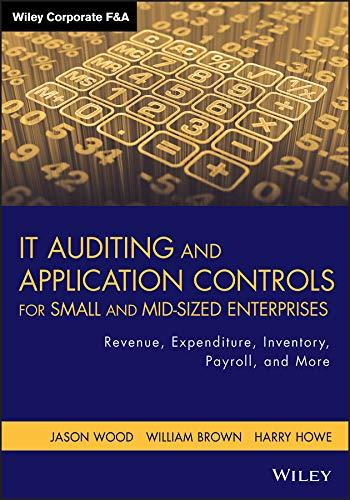Part 1: Here are 12 questions relating to the segment of the flowchart from the expenditure cycle on the previous page that are presented in a multiple-cholce format. Each question is worth one point. - For each question, select the best answer choice. - Indicate your selection by writing the corresponding letter in the space provided at the bottom. right of the question. 1. Which segregation of duties function is the Accounts Payable Clerk primarily performing? a. Authorization b. Recordkeeping c. Custody d. None of the above 2. Which segregation of duties function is the Controller primarily performing? a. Authorization b. Recordkeeping c. Custody d. None of the above 3. Where did Symbol A most likely come from? Your Answer: a. Requisitioning Department b. Purchasing c. Receiving d. Vendor Where did Symbol B most likely come from? Your Answer: a. Requisitioning Department b. Purchasing c. Receiving d. Vendor What does Symbol C most likely depict? Your Answer: a. Sales Order b. Original Purchase Order c. Receiving Report d. Vendor Invoice 6. What does Symbol D most likely depict? a. Sales Order b. Original Purchase Order c. Receiving Report d. Vendor Invoice Your Answer: 7. What does Symbol E most likely depict? a. Matching of documents b. Approval of recording of purchase and payment of payable c. Data entry of purchase data d. Update of accounts payable file Your Answer: 8. What does Symbol F most likely depict? a. Matching of documents b. Approval of recording of purchase and payment of payable c. Data entry of purchase data d. Update of accounts payable file 9. What does Symbol G most likely depict? a. Matching of documents b. Approval of recording of purchase and payment of payable c. Data entry of purchase data d. Update of accounts payable file Your Answer: 10. What type of file is most likely depicted in the flowchart? a. Paper file in alphabetical order b. Computer-based transaction file c. Computer-based master file d. Computer-based tape file Your Answer: 11. Where did Symbol H most likely go? a. Requisitioning Department b. Purchasing c. Receiving d. Treasurer Your Answer: 12. The documents depicted immediately before Symbol H are often referred to as a single document called the: a. Purchase Support Documents b. Voucher Package c. Vendor Review Documentation d. Vendor Master File Part 2: Presented below are descriptions of two key controls in the expenditure cycle. Review each description and address the questions presented. Control \#1: The Purchasing Department sends the Receiving Department a blind copy of every purchase order issued. a. Explain why sending the purchase order to the Receiving Department is an authorization control. (2 points) b. What is meant by the term "blind copy" when referring to a purchase order? ( 2 points) c. What risk is the providing of a blind copy of the purchase order to the Receiving Department attempting to reduce? ( 2 points) Control \#2: The Treasurer reviews the voucher package prior to signing the check for any payments over $5,000. a. Identify the four key documents typically contained in a voucher package. Identify who is responsible for preparing each document. Briefly describe the purpose of each document. Indicate your answers by completing the chart below. ( 3 points each =12 points) 0. What risk is reviewing the voucher package prior to signing the checks over $5,000 attempting to reduce? ( 2 points) Part 3: Piccirilli Manufacturing Company uses approximately 6,400 units of raw material evenly throughout the month. The company requires two weeks to process and recelve an order of materials. The Company wants to maintain a minimum inventory level of 600 units at all times. Piccirilli Manufacturing Company incurs carrying costs of $1.40 per month for one unit of its major raw material and incurs costs of $5,670 for each order it places. a. Compute the reorder point for the raw material (3 points) Supporting Calculation Required: b. Compute the economic order quantity for the raw material (3 points) Supporting Calculation Required: Interpret the meaning of your answers to a, and b, above. You must specifically use the amounts that you calculated in your interpretation. (2 points)












